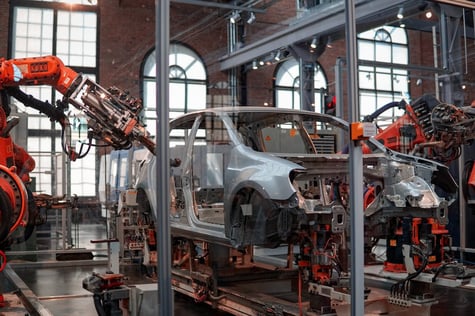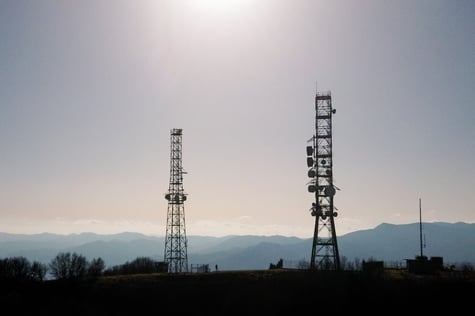Massive Machine-Type Communications (mMTC) is one of three core 5G service areas. It has been created specifically to enable a huge volume of small data packets to be collected from large numbers of devices, simultaneously. mMTC supports applications using Internet of Things (IoT) sensors, meaning that data can be used to reduce energy consumption, make work more efficient, or improve our lives in other ways.
The 5G network architecture has been designed with three key service areas in mind:
- Massive Machine-Type Communications (mMTC). This is used to connect large numbers of devices and is expected to transform the IoT industry. It aims to meet the demands of smart cities and other IoT applications.
- Enhanced Mobile Broadband (eMBB). This service area is essentially an extension and improvement on that which is currently used for cellular data. It provides speeds of up to 10Gbps for high bandwidth usage such as HD video streaming or VR/AR gaming, providing faster download speeds and improved user experiences.
- Ultra-reliable Low-Latency Communication (URLLC). URLLC is ideal for mission-critical applications where network reliability and low-latency (less than 1 ms) is paramount. This could be used in applications such as self-driving cars or industrial remote control.
What is mMTC?
mMTC supports connection densities of up to one million devices per square kilometre. This is over ten times higher than 4G LTE network capability. With this ability, 5G can provide the infrastructure needed to support huge networks of cellular-connected sensors. The mMTC service area is designed for massive IoT deployments using large numbers of low-power devices to regularly transmit small amounts of data. These IoT devices need to have a long battery life, potentially for up to 10 years.
IoT sensors transmit small data packets over a relatively long distance (up to 10 km). This makes them perfectly placed for applications such as smart agriculture; where hundreds of sensors send weather, soil moisture and fill-level data across areas of remote farmland. Using this data, farmers can optimise irrigation frequency and volumes to ensure high crop yields. But without the low latency networks to connect these sensors in rural, deep indoors or underground locations, they would fail to function.
How does it work?
5G networks are designed to allow each of the three service areas to exist as separate networks, while using the same physical infrastructure. Network slicing, also called software-defined networking or SDN technology, is the system of dividing bandwidth up across these different areas, allowing different service functions to be customised. This means each application can access the required resource simultaneously, with higher priority applications prioritised.
Each “slice” of the network can be configured independently in terms of security, quality of service and network provisioning. For example, mMTC offers low-bandwidth connectivity with deep coverage, whereas URLLC provides high reliability without the same depth of coverage. Existing IoT technology uses low-power wide area networks (LPWAN), which often require an ethernet or cellular backhaul from an IoT gateway. The sensors operate on a network such as LoRaWAN or Sigfox, then the gateway sends the information to a server using a 4G LTE network or a wired internet connection.
Narrowband IoT, or NB-IoT, and LTE-M technology are now being adopted in the IoT sphere. This means that each sensor or device has its own cellular connectivity within the 4G network. 5G is designed to run alongside this technology, rather than replacing it, with NB-IoT and LTE-M becoming part of the 5G “family”.
What are the most appropriate mMTC use cases?
mMTC 5G connectivity improves wireless performance in a wide range of applications. Smart cities use high numbers of sensors to monitor utilities such as water, gas and electricity and waste management. An example of IoT devices in this context could be fill-level sensors on bins that enable waste management teams to only visit bins that need emptying. This would reduce operating costs, save fuel, and reduce emissions as waste collection services are targeted to where they’re needed
Within smart cities, sensors can be placed strategically around the city to collect data, which is sent back to a central server and analysed to present meaningful information. Different sensors report back different data sets which can be combined to give insight into improvements that can be made. For example, combining and analysing data from thousands of traffic cameras, radar traffic counters, and air quality sensors could help to reduce traffic congestion and improve air quality for residents in a smart city
Designing devices for high density IoT applications
mMTC offers exciting opportunities to acquire and exploit large datasets, however meeting design specifications for small, low-cost, IoT devices can prove challenging. Particularly when the long-range and low power consumption requirements are considered, placing specific requirements and constraints on designers. IoT devices also face an additional challenge as they must meet network carrier specifications to achieve certification.
Selecting the right components, from batteries to antennas, is critical in the success of an IoT device. At Antenova, we recommend including antenna selection in the early design stages of your devices, to ensure device integration and network compliance, while delivering maximum efficiency and performance.
To see our full range of antennas for cellular devices – including 5G, 4G and 3G – browse our range of antennas or download our antenna comparison guide.




